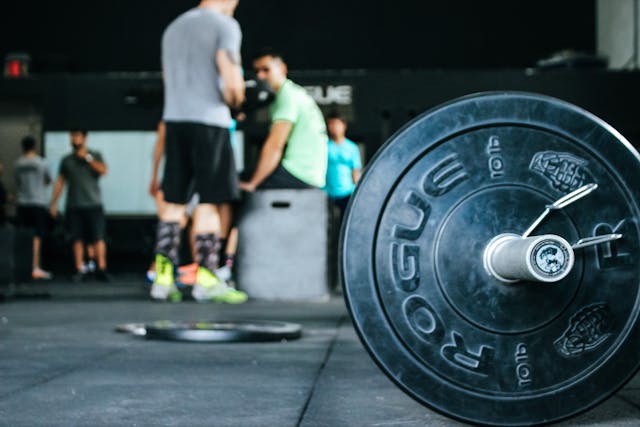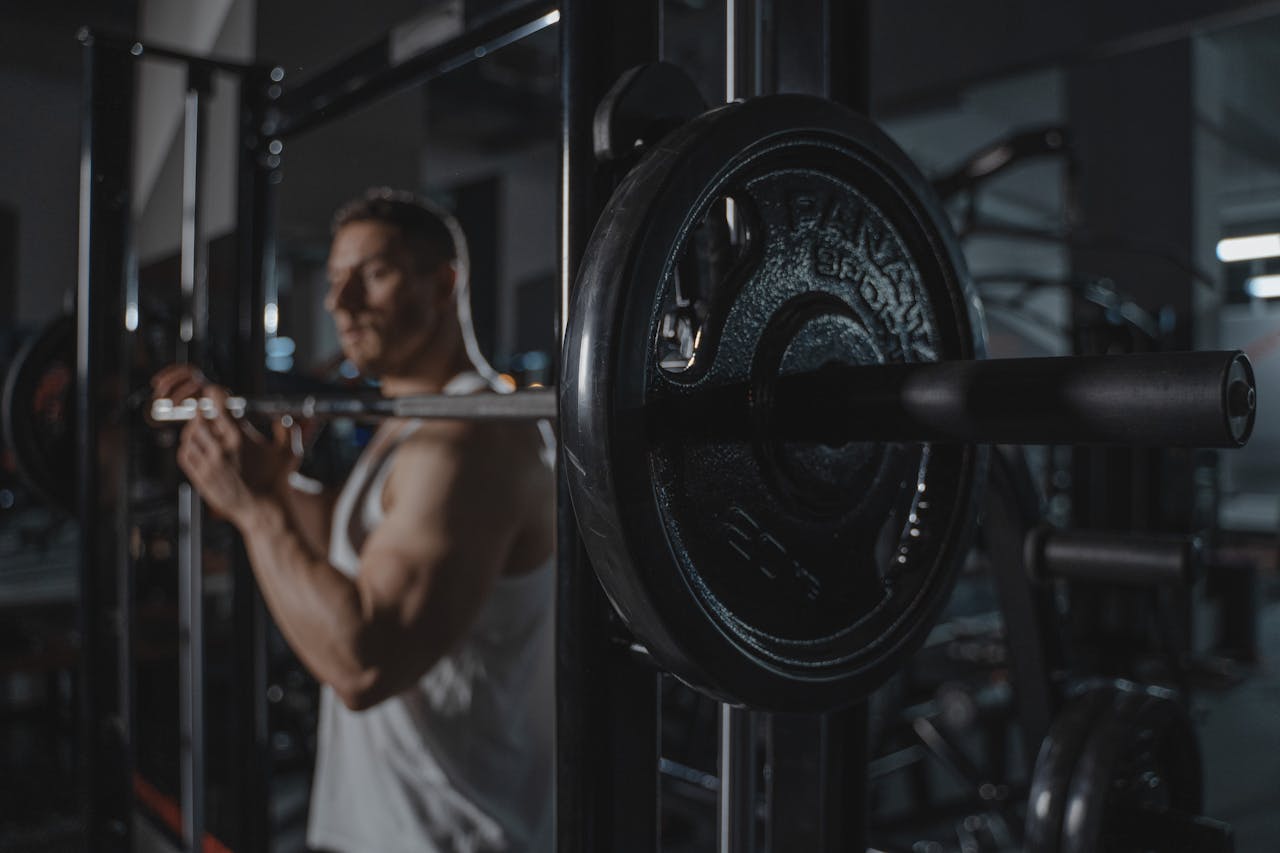Contents
The gym feels simple when you think about it. You walk in with your headphones. You hit a few sets. You take breaks by the water fountain. After a good pump, you go home and carry on with your day. It feels like a routine that runs on autopilot — so much so that you might forget to be careful of your surroundings.
But even familiar gyms can surprise you. Floors get slippery fast. Equipment wears down. People crowd the weight area until it feels like a traffic jam. Even seasoned lifters can get hurt when they’re not careful.
Don’t wait until you’re hurt while working out. Here are eight risks hiding in plain sight and what you can do to stay safe every time you step inside the gym.
Walking Behind Someone Lifting Heavy
Crowded gyms make people forget about personal space. You cut through the free-weight area because it’s faster. You squeeze behind someone. But slipping behind a lifter is one of the most dangerous things you can do.
Picture someone doing a barbell squat. They have a heavy weight on their back. Their balance can shift at any second. One tiny misstep from you or them can send both of you to the floor.
Give lifters space. Stay wide. Walk around, even if it feels like a longer route. Wait a few seconds for lifters to finish a rep. Treat the lifting area like a zone you respect — not a hallway to pass through. When you stay alert, you protect your entire body. You also protect the lifter from losing focus.
Weights You Can Trip on When Left on the Floor

Clutter is one of the biggest hazards at a gym. People drop dumbbells, then walk away. Plates roll under benches. Bars get left leaning on walls. It breaks basic gym etiquette — and it puts everyone at risk.
Tripping over a loose weight can twist an ankle, slam your knee, or send you crashing into someone else. So, keep your eyes on the ground when you walk. Step around loose weights. Pick up what you can if someone forgot. Re-rack your own gear every time. Tell trainers or staff when equipment piles up on the floor.
A clean floor keeps your steps safe. You walk steadier, lift more confidently, and help make the space safer for the next person who walks through.
Slippery Floors Care of Sweat
Sweat hits the gym floors more than people think. One heavy set is enough to leave a wet spot behind — and that tiny puddle can take your feet right out from under you. A fall like that can leave you seriously hurt.
Stay sharp to avoid gym injuries. Look at the floor before you step. Wipe sweat when you see it. Slow down around busy machines where people drip the most.
And if something goes wrong and you take a bad fall because the gym didn’t clean a hazard, talk to the staff right away. Take photos if you need to. If you’re seriously hurt, reach out to slip and fall injury lawyers — you could potentially have a premises liability case. Lawyers can explain your legal options so you understand what’s next.
Using Machines with Loose Parts
Exercise machines may look solid, but heavy use wears them out. Bolts loosen. Cables fray. Seats wobble. Ignoring these signs puts you in harm’s way. A loose pulley can snap. A moving arm can jerk. A shifting seat can throw your back out.
Always check the machines before you start. Grab the handle and tug lightly. Wiggle the seat. Look at the cables. If something feels shaky, skip it. Don’t force a workout on bad equipment. Let one of the trainers know it needs attention.
Using stable machines keeps your workout clean and effective. It also keeps the next person from getting hurt.
Benches That Slide on Smooth Floors
Benches look heavy, but some glide like ice skates on polished floors. You sit down for a bench press and push back — suddenly, the whole bench shifts. Your shoulders slip. Your back arches wrong. That tiny slide can turn into a bad fall or a pulled muscle.
Test the bench before you lie down. Press your foot against one end. Then, push gently. If it moves, reposition it. Place it on a rubber mat if the gym has one. Don’t lift if the bench feels unstable — it’s not worth the risk. Switch to another bench if needed.
A stable bench means a stable lift. Your back stays safe. Your bar path stays clean. You lift with confidence instead of fear.
Treadmills Set Way Too Fast
Cardio looks harmless — until speed takes over. Many accidents happen when people hop onto treadmills and set them to a crazy speed. If you go at a pace you can’t handle, it can throw you backward instantly.
Set your speed slowly. Start lower than you think you need. Feel your footing before going higher. Keep the safety clip on your shirt. Stay centered on the belt. Hold the rails if you feel unsteady for a second.
When you control your speed, you control your safety. You finish your run feeling strong — not like you’re about to fly off the treadmill.
Dirty Equipment That Spreads Germs
Germs are everywhere in gyms. Most people worry about injuries, but they forget about infections and illnesses.
Evidence shows that gym equipment has more bacteria than toilet seats. That means benches, weights, and mats can carry things that knock you out for days. You get sick. Your energy drops. Your training stops. That’s a loss no one wants.
To avoid sickness and prevent skin infections from the gym, wipe down the equipment you’re about to use — and after you’re done. Bring your own towel. Don’t touch your face mid-workout. Keep your water bottle off the floor. Wash your hands before you leave. Shower when you get home.
Using Weights That Are Too Heavy
Ego lifting is a quiet danger. You see someone lifting big numbers, and you want to match it. But using weights that overpower you puts you at risk. Shoulders tear. Backs strain. Knees twist. One wrong rep can set you back for months.
When lifting, start light. Feel the full range of motion. Build weight slowly. Ask a trainer to check your form. Ask gym buddies to spot you. Stop if something feels sharp or strange. Listen to your body.
Choosing the right weight keeps you strong, steady, and injury-free. You build real power over time. You train smarter — not harder for the sake of it.
Conclusion
Staying safe in the gym isn’t about being scared — it’s about being vigilant. Your workouts should build you up, not take you to the hospital.
Follow the tips above to stay safe every time you exercise. Watch the floor. Check the equipment. Give people space. That tiny bit of awareness pays off. You stay focused, steady, and injury-free. Strong bodies start with smart choices. Protect yourself every time you train so you can keep getting stronger.



